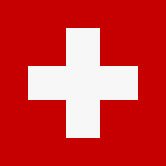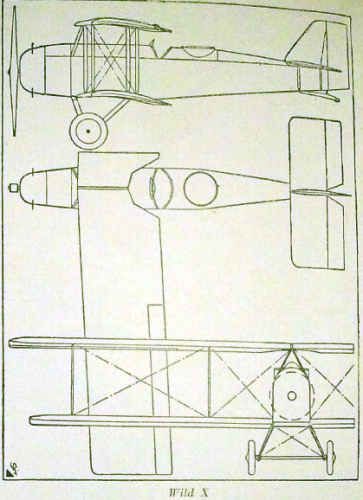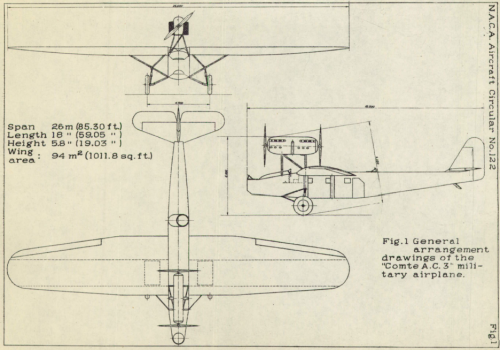The mention by Hesham of the Swiss Comte Wild-X and Wild 23 in the 1920's made me curious as the names did not seem to fit with the usual Alfred Comte AC prefix used later.
It appears that the fellow Swiss Ing. Robert Wild of Dübendorf and Uster worked as chief engineer and aircraft engineer at the Automobil und Aviatik AG, Flight Engineering Department in Mühlhausen Germany and at the Società Anonima Meccanica Lombarda di Monza SAML in Italy (see also http://www.secretprojects.co.uk/forum/index.php/topic,18731.msg180612.html#msg180612).
The Aviatik C-1 training aircraft was developed by him, was exhibited in 1914 in Bern. This was then purchased by the Swiss Confederation without testing on the outbreak of war on 3 August 1914 and used for training purposes until 6 January 1917.
After the founding of Swiss military science, Robert Wild, at the time a Swiss abroad, was commissioned to develop a new aircraft. In cooperation with the industry, the Wild WTS aircraft type was built in Dübendorf and Uster, which was available as a training aircraft from 1915 onwards. A second aircraft was deployed in June 1916 and was used until 1921. It was two-seat biplane with wooden wings and fabric covering.
The aircraft was received favourably by pilots and Wild was commissioned to build six reconnaissance aircraft designated WT-1, which were used by the armed forces from 1916 to 1922.
In the search for a more powerful combat aircraft, Ing. Robert Ackerman received the development contract for the "Wild Spezial" aircraft, from an original Robert Wild design. The test that took place in 1917 did not satisfy the authorities in Switzerland and the type became a trainer. On 5th November, 1917 while on a low altitude reconnaissance flight, the "Wild Spezial" crashed the roof of the restaurant Löwen in Schlieren. The crew was only slightly injured but the aircraft was removed from use.
In 1917, the Swiss Federal Department of Engineering, Department of Flight, licensed 11 Wild WT and 9 Wild WTS as Training aircraft in Thun. These aircraft were partially used by the military Fliegertruppen until 1934.
Comte then completed two designs believed to have been from the pen of Wild.
Wild Designs noted so far:
Wild WTS
(Manufacturer A. Wild)
2 built for Training, service between 1915-1921
Wild WT-1
(Manufacturer A. Wild)
6 based on the WTS, built for Training, service between 1916-1922
Wild Special
(Manufacturer A. Wild)
1 built for Training, service between 1916-1917
Wild WT
(Manufacturer K + W Thun)
11 licence built for Training, service between 1917-1934
Wild WTS
(Manufacturer K + W Thun)
9 licence built for Training, service between 1917-1934
Wild 43
(Manufacturer A.Comte)
6 built for Training, service between 1923 - 1926
Wild X
(Manufacturer A.Comte)
8 built for Fighter and Observation, service between 1927-1928
Details for the WTS design from the German Wikipedia
Engine: 1 x Mercedes DI
Wingspan : 12.00 m
Length: 7.80 m
Height: 3.00 m
Max take-off weight: 1,080 kg
Maximum speed: 105 km/h
Service ceiling: 3,000 m
Range: 200 km
Details for the Wild X design from the L'Ala d'Italia 03-1928
Engine: 1 x Jupiter (420 hp)
Wingspan (Upper): 13.6m
Wingspan (Lower): 12.6m
Wing Area: 47 sq m
Length: 9.86 m
Empty weight: 1,105 kg
Max take-off weight: 1,850 kg
Maximum speed: 190 km/h
Service ceiling: 8,500 m
Time to height (5,000 m): 15 minutes
Time to height (7,000 m): 30 minutes
Bomb load: 2 x 25 kg
Sources:
Zur Geschichte der schweizerischen Eigenentwicklung von Flugzeugen by Walter Dürig
https://de.wikipedia.org/wiki/Wild_WTS
Insignia Magazine No.15 Drawings of the “Wild Spezial”
Die Flugzeuge der schweizerischen Fliegertruppe seit 1914 by Jakob Urech (Militärflugplätze Dübendorf)



